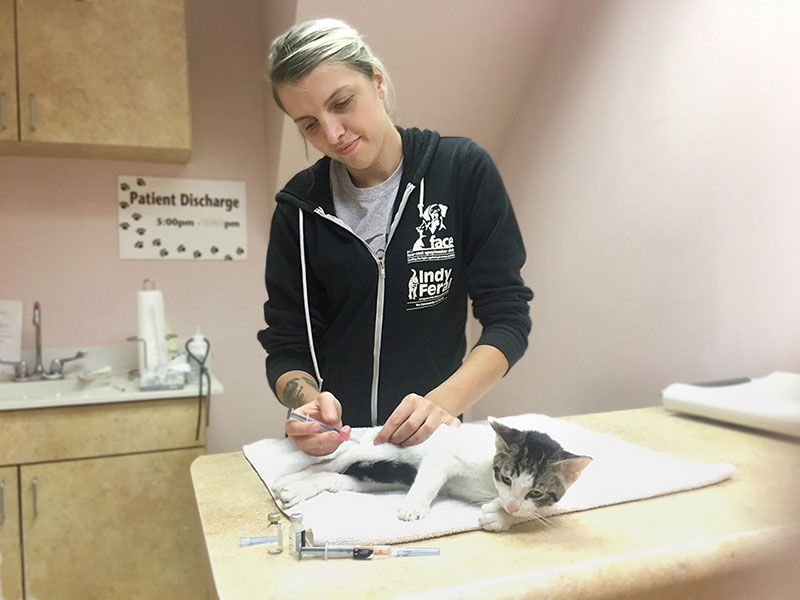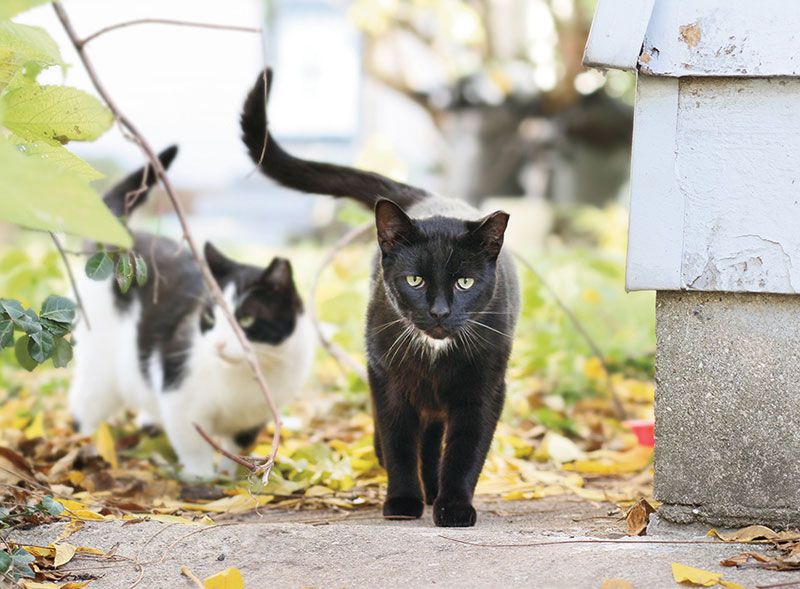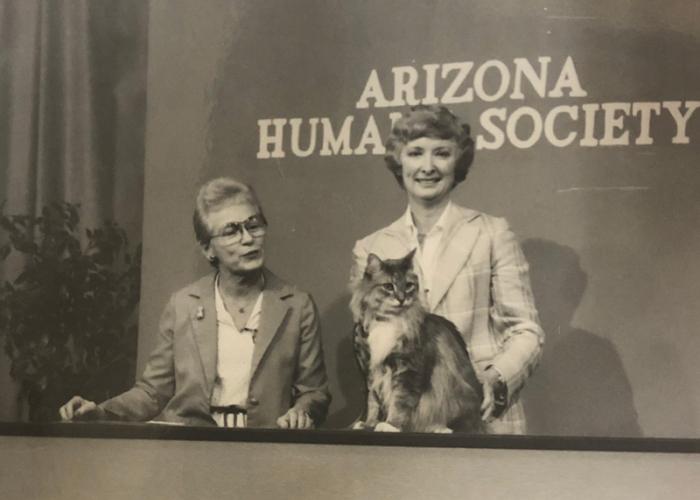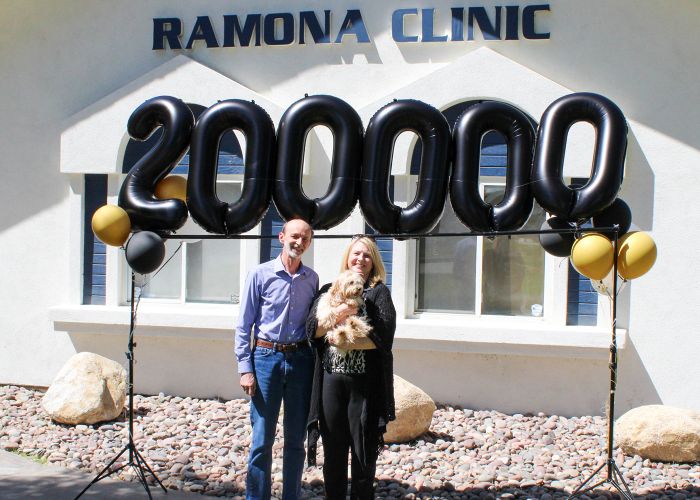The art of compromise
Giving a little to address public health concerns related to community cats

Sandra Norman is a veterinarian for the Indiana State Board of Animal Health and director of its companion animal/equine division. She’s also a staunch advocate of trap-neuter-return (TNR) for community cats. Although that might seem an odd combination, Norman describes her approach as “everyone has to give a little.” That philosophy helps her navigate the often complex situations in which human health and animal welfare goals may appear to conflict.
With over 20 years’ experience in public health and several years in private practice, Norman has applied many lessons from her career to her work as a volunteer and consultant with IndyFeral, an Indianapolis-based TNR group. While some public officials may worry about risks and liability when it comes to TNR, Norman believes that a proactive program that engages the community increases the health and safety of both the cats and the people around them.
Outdoor cats can present valid public health concerns, Norman says, with rabies at the top of the list (due to the seriousness of the disease, not its prevalence in cats). Lesser concerns, which vary based on region, include internal parasites, such as giardia, roundworms, hookworms and Toxoplasma gondii, as well as external parasites, such as fleas (which can carry plague), ticks (which can transmit Lyme disease) and the bacterium that causes cat-scratch disease.
With such serious-sounding risks and the potential for scaremongering by TNR opponents and the media, how can the animal welfare community best address these concerns while still advocating for nonlethal programs?
Resources
- Managing Community Cats (a guide for community officials)
- Rabies, Toxoplasmosis and Parasites: Managing Public Health Concerns (a free webinar taught by Sandra Norman) (under “archived webinars”)
- Trap-Neuter-Return: How to Manage a Community Cat Colony (a self-paced online course by The HSUS and Neighborhood Cats)
Norman notes that promoting commonsense precautions, such as simple hand-washing guidelines, and scientific facts “can help alleviate any fear of potential disease problems.” She advises TNR advocates to learn about the feline diseases in their area and the public health risks associated with them, as well as practical methods for limiting the risks.

Fortunately, the goals of TNR support disease management and risk reduction. The No. 1 goal of a TNR program is to reduce the number of community cats, and fewer cats means less opportunity for disease transmission. Spayed and neutered cats are also healthier and less prone to infection. Managed colonies can be monitored for illness and, of course, vaccinations given as part of a TNR program help provide “herd immunity” in the area.
With Norman’s support, IndyFeral has provided information to its community about the public health benefits of its TNR program. In a written statement, Jeff Bennett, the deputy mayor of community development for Indianapolis, noted that the “program creates a healthy, stable community cat population. It promotes public health in our neighborhoods by reducing the number of unvaccinated, unsterilized cats.”
This is not to say that TNR solves all concerns. Advocates need solid protocols for managing colonies, including revaccination, feeding practices that keep colony sites clean and don’t attract wildlife, and plans for what to do in case of a disease outbreak or parasite infestation. These concerns and others have to be navigated with the best science and implementation strategies available, as well as discussion and compromise.
In this way, TNR advocates can also help build acceptance of the philosophy that when it comes to the unique challenges of managing community cats, we can’t let the perfect be the enemy of the good. For example, Norman finds that getting hung up on the ideal that all community cats be revaccinated for rabies misses the wider point that TNR already helps mitigate human rabies risk, since otherwise the cats wouldn’t receive even one vaccine.
TNR “is not an immediate fix, but instead a long-term, permanent solution,” Norman notes, adding that when everyone gives a little to establish effective programs, everyone in the community can benefit.







